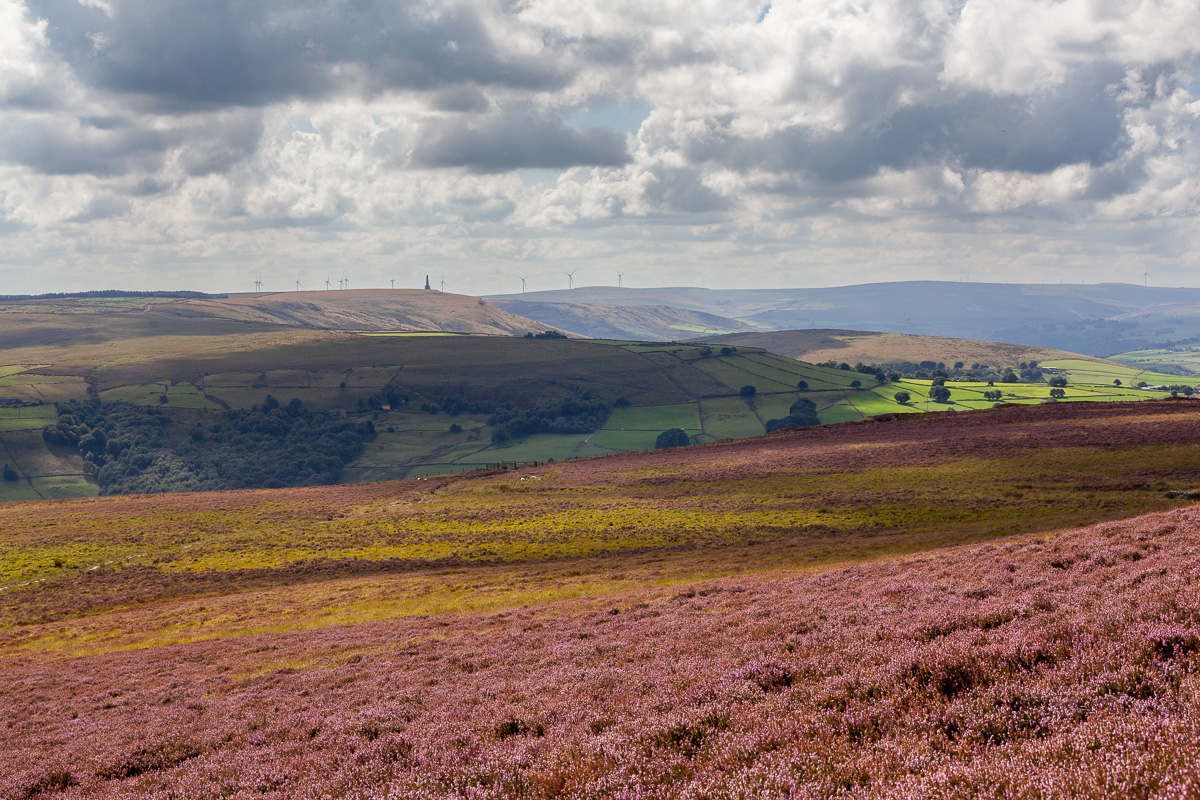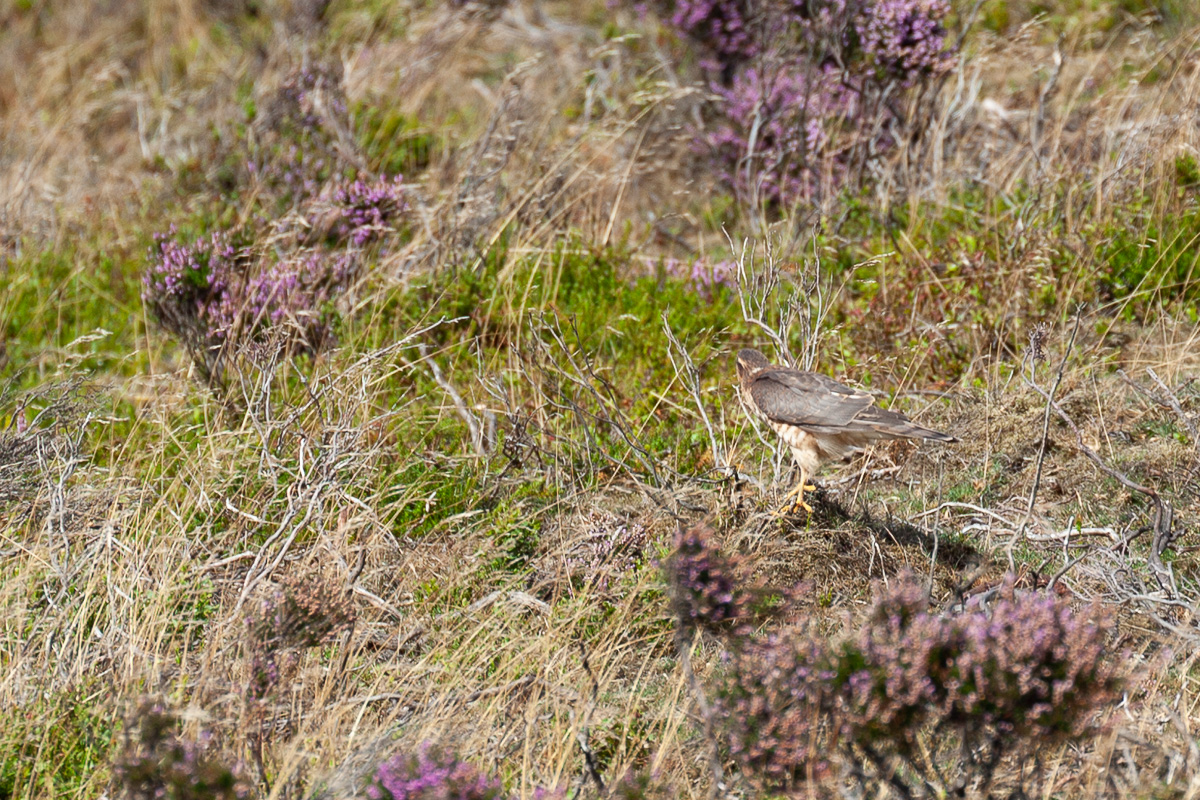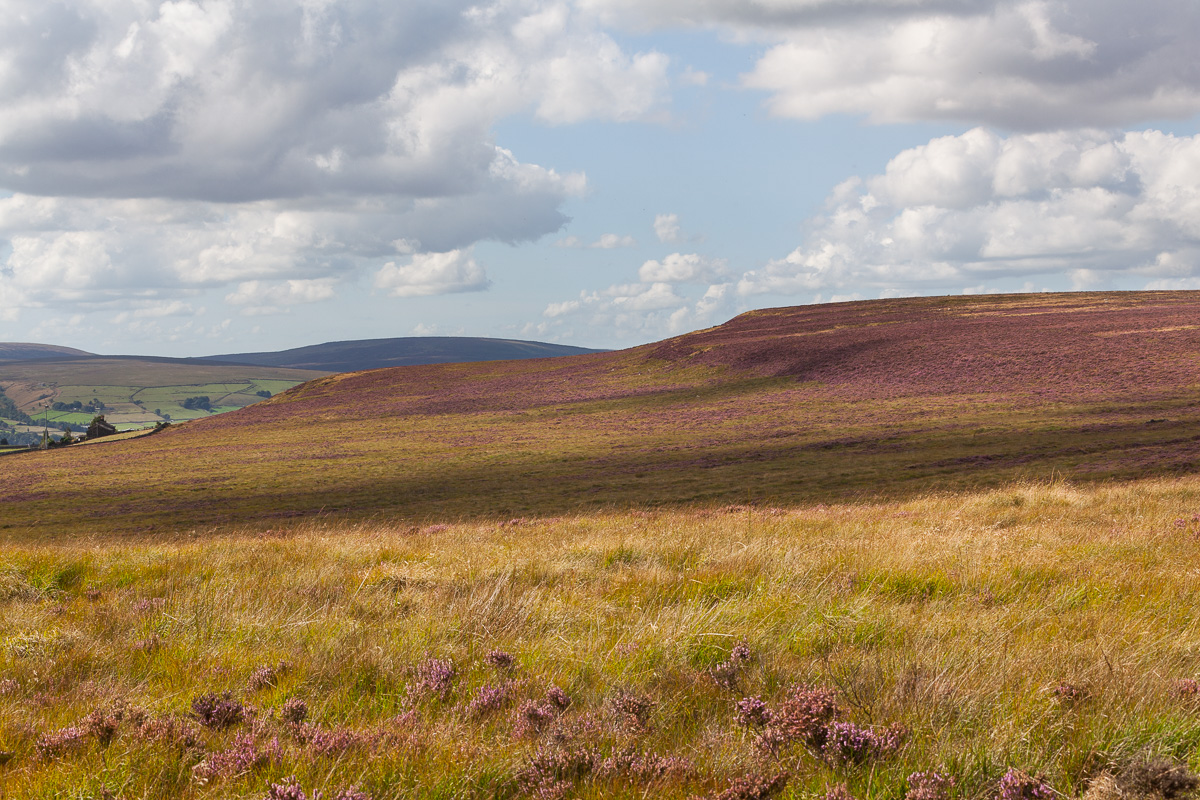The heather is just about at its best at the moment, so, on Thursday, Jen and I went for a walk on the Moor.

It was very quiet up there, which suited us just fine. We only saw one other person, and that was from some distance. Neither did we see or hear any sign of grouse. I’ve noticed this before in August. It’s almost as if they’re keeping their heads low at the start of the shooting season. Either that, or they didn’t keep their heads low enough! That said, I haven’t heard any shooting so far this year.
What we did encounter, however, was a healthy assortment of raptors. Having paid our customary respects at the trig point, as we headed along the edge, we spotted four kestrels hanging low in the updraught. They were too far away to make out details, but I assumed they must be a pair of adults showing their offspring the ropes. A few moments later, I spotted what I initially took to be another kestrel squatting in the heather, but it turned out to be a female sparrowhawk, which took off as soon as it spotted us. Then, seconds later, I heard the unmistakeably wheezy whistle of a buzzard, and looked up to see it circling high overhead. Three species of raptors in as many minutes: the local gamekeepers will be going apoplectic!

As we headed down from the edge and made our way along the wall at the edge of the Moor, I kept my eyes peeled for wheatears, and soon spotted one flitting across the top field and landing on a fence-post: a male. As anyone who’s read On the Moor will know, I have a particular soft-spot for wheatears: a species with a remarkable migration route.

As we continued along the edge of the Moor, a buzzard, perhaps the same one we had seen earlier, was kicking up a commotion, gliding low, back and forth, above a distant field, wheeze-whistling incessantly. I thought this might be a young bird practising its hunting skills while trying to summon its parents, although I saw no sign of any other buzzards. Until recently, buzzards were seldom seen around here, being generally unwelcome in sheep-rearing and grouse-shooting country, but they’ve become noticeably more common over the last few years. A pair nested in nearby Burlees Wood this year and last, so I wondered whether this forlorn bird might be one of their offspring.
Just before we headed down off the Moor from Johnny House, I remembered to train my binoculars on the nearly dead tree, and was pleased to see, despite its having toppled over many years ago, it was once again covered in leaves.
Leave a Reply